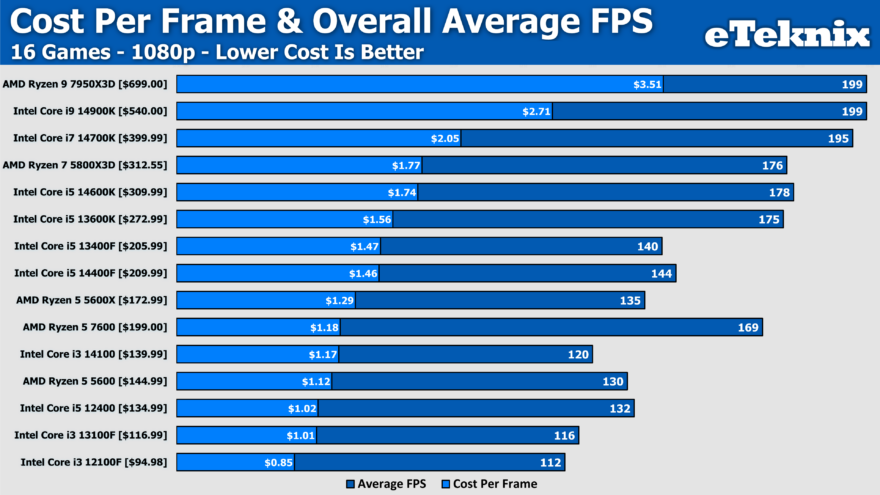Intel Core i3 14100F CPU Review

Cost Per Frame
Looking at the cost per frame allows us to see where a particular product is positioned relative to the competition and previous-generation products. By taking the price of the product and dividing it by the overall game average FPS, we have a simple formula that allows us to see if a product offers superior value for money.

Now talking about price, when we look at the cost per frame things go from bad to worse, with the 14100 sitting worse than the 12100F and 13100F in terms of value, which isn’t exactly unexpected to say the least, as newer products are more expensive, but you could argue that it’s not new, as it’s just a refresh. What makes this the final nail in the coffin for the 14100 though is that the 5600 and even the 12400 both manage to see better price-to-performance ratios whilst having decent jumps in the average FPS as well. The 5600 sits $5 more expensive than the 14100 and both can utilise DDR4, though there is always an argument that the 14th gen can use DDR5 as well, but I’d like to think that anyone buying a 14100 is likely on a budget, so would probably opt for DDR4 anyway. The more interesting one for me is the 12400, which comes in $5 cheaper than the 14100 and has better overall frame rates than both the 14100 and the 5600 so for me, I’d likely be looking at that to get a good balance of cost and performance. Sure the 12100F is cheaper when looking at the cost per frame, but that’s also reflected in its performance. The other stand-out CPU here is the Ryzen 5 7600 which does come in $60 more expensive when compared to the 14100, but for that you get 49 FPS more on average and for only $0.01 more per frame which further shows how out of touch Intel are with pricing based on the performance, though this is only taking into account gaming, and productivity is a bit of a mixed bag that does show Intel in a somewhat better light in places.








